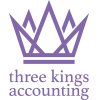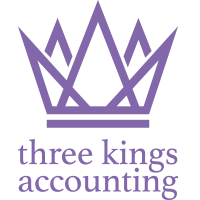What are trusts?
Trusts are a long established mechanism which allow individuals to benefit from the assets whilst others (the trustees) have the legal ownership and day to day control over the assets. A trust can be extremely flexible and have an existence totally independent of the person who established it and those who benefit from it.
A person who transfers property into a trust is called a settlor (or truster in Scotland). Persons who enjoy income or capital from a trust are called beneficiaries. Though not very common with English trusts, it is possible for the settlor to appoint a protector, an independent person who oversees the administration of the trust.
Trusts are separate persons for UK tax purposes and have specific rules for all the main taxes. There are also a range of anti-avoidance measures aimed at preventing exploitation of potential tax benefits.
Trust Registration Service
The Trust Registration Service (‘TRS’) requires all trusts and ‘complex estates’ (broadly those with a value of more than £2.5m or involving a capital sale with proceeds of more than £500,000) to be registered centrally. In addition to this the trust must update the register every year when there has been a taxable event. The most common instance of this will be the submission of annual income tax returns to be completed by 31 January following the relevant tax year; the TRS register must be updated by the same deadline. However, it is not just the imposition of annual income tax liabilities which necessitates an annual TRS update, any liability of any tax (including IHT and SDLT) will require the TRS to be updated. Currently only if the trust has no tax liability at all is a TRS update unnecessary, however a consultation will be underway in 2019 with a view to extending the reporting requirement to all trusts irrespective of any tax liabilities.
The TRS is available via www.gov.uk/trusts-taxes/trustees-tax-responsibilities
Types of trusts
There are two basic types of trust in regular use for individual beneficiaries:
- life interest trusts (sometimes referred to as interest in possession trusts and in Scotland known as life renter trusts)
- discretionary trusts.
Life interest trusts
A life interest trust has the following features:
- a nominated beneficiary (the life tenant or life renter in Scotland) has an interest in the income from the assets in the trust or has the use of trust assets. This right may be for life or some shorter period (perhaps to a certain age)
- the capital may pass onto another beneficiary or beneficiaries.
A typical example is where a widow is left the income for life and on her death the capital passes to the children.
Discretionary trusts
A discretionary trust has the following features:
- no beneficiary is entitled to the income as of right
- the settlor gives the trustees discretion to pay the income to one, some or all of a nominated class of possible beneficiaries
- income can be retained by the trustees
- capital can be gifted to nominated individuals or to a class of beneficiaries at the discretion of the trustees.
Inheritance tax consequences
Importance of 22 March 2006
Major changes were made in the IHT regime for trusts with effect from 22 March 2006. The old distinction between the tax treatment of discretionary and life interest trusts was swept away. The approach now is to identify trusts which fall in the so-called ‘relevant property’ regime and those which do not.
Relevant property trusts
Trusts which fall in the relevant property regime are:
- all discretionary trusts whenever created
- all life interest trusts created in the settlor’s lifetime after 22 March 2006
- any life interest trust created before 22 March 2006 where the beneficiaries were changed after 6 October 2008. A key exception exists where a change occurs after 6 October 2008 in favour of a spouse on the death of a life tenant.
If a relevant property trust is set up in the settlor’s lifetime, this gives rise to an immediate charge to inheritance tax but at the lifetime rate of 20%. If the value of the gift (and certain earlier gifts) is below £325,000 no tax is payable. Discretionary trusts set up under a will attract the normal inheritance tax charge at the death rate of 40%.
Relevant property trusts are charged to tax every ten years (known as the periodic charge) at a maximum rate of 6% of the value of the assets on each tenth anniversary of the setting up of the trust. A fair prorate charge of less than 6% (and often much lower) is also made if assets are appointed out of the trust known as an ‘exit charge’.
Benefits of a relevant property trust
Whilst the inheritance tax charges do not look attractive, the relevant property trust has a significant benefit in that no tax charge will arise when a beneficiary dies because the assets in the trust do not form part of a beneficiary’s estate for IHT purposes. There can be significant long-term IHT advantages in using such trusts.
Trusts which are not relevant property
Within this group are:
- life interest trusts created before 22 March 2006 where the pre-2006 beneficiaries remain in place or were changed before 6 October 2008 or where a second spouse has taken over the life interest on the death of the first spouse
- the trust was created after 22 March 2006 under the terms of a will and gives an immediate interest (cannot be replaced by another) in the income to a beneficiary and the trust is neither a bereaved minor’s nor a disabled person’s trust; or
- the trust is created in the settlor’s lifetime or on death for a disabled person.
In these circumstances a lifetime transfer into a life interest trust will be a potentially exempt transfer (PET) and no inheritance tax would be payable if the settlor survived for 7 years. Transfers into a trust on death would be chargeable unless the life tenant was the spouse of the settlor. There is no periodic charge on such trusts. There will be a charge when the life tenant dies because the value of the assets in the trust in which they have an interest has to be included in the value of their own ‘settled estate’ for IHT purposes.
Capital gains tax consequences
If assets are transferred to trustees, this is considered a disposal for capital gains tax purposes at market value but in many situations any capital gain arising can be deferred and passed on to the trustees.
Gains made by trustees are chargeable at 20%. There is an exception for residential property gains which are charged at 28%.
Where assets leave the trust on transfer to a beneficiary who becomes legally entitled to them, there will be a CGT charge by reference to the then market value. Again it may be possible to defer that charge.
Income tax consequences
Life interest trusts are taxed on their income at 7.5% on dividends and 20% on other income. Discretionary trusts pay tax at 38.1% (dividends) and 45% (other income).
Income paid to life interest beneficiaries has an appropriate tax credit available with the effect that the beneficiaries are treated as if they receive the income as the owners of the assets.
If income is distributed at trustee discretion from discretionary trusts, the beneficiaries will receive the income net of 45% tax. They are generally able to obtain refunds of any overpaid tax and if they pay tax at 45%, they will get credit for the tax paid. Refund exceptions may apply in certain settlor trust situations.
Could I use a trust?
Trusts can be used in a variety of situations both to save tax and also to achieve other benefits for the family. Particular benefits are as follows:
- if you transfer assets into a trust in your lifetime you can remove the assets from your estate but could act as trustee so that you retain control over the assets (always remembering that they must be used for the beneficiaries)
- a transfer of family company shares into a trust in lifetime (or on death) can be a way of ensuring that the valuable business property relief is utilised
- by putting assets into a trust you can give the beneficiary the income from the asset without actually giving them the asset which could be important if the beneficiary is likely to spend the capital or the capital could be at risk from predators such as a divorced spouse
- trusts (particularly discretionary trusts) can give great flexibility in directing benefit for different members of the family without incurring significant tax charges
- if you want to make some IHT transfers in your lifetime but are not sure who you would like to benefit from them, a transfer to a discretionary trust can enable you to reduce your estate and leave the trustees to decide how to make the transfers on in later years. It also means that the assets transferred do not now hit the estates of the beneficiaries.
How we can help
This factsheet briefly covers some aspects of trusts. If you are interested in providing for your family through the use of trusts please contact us.


